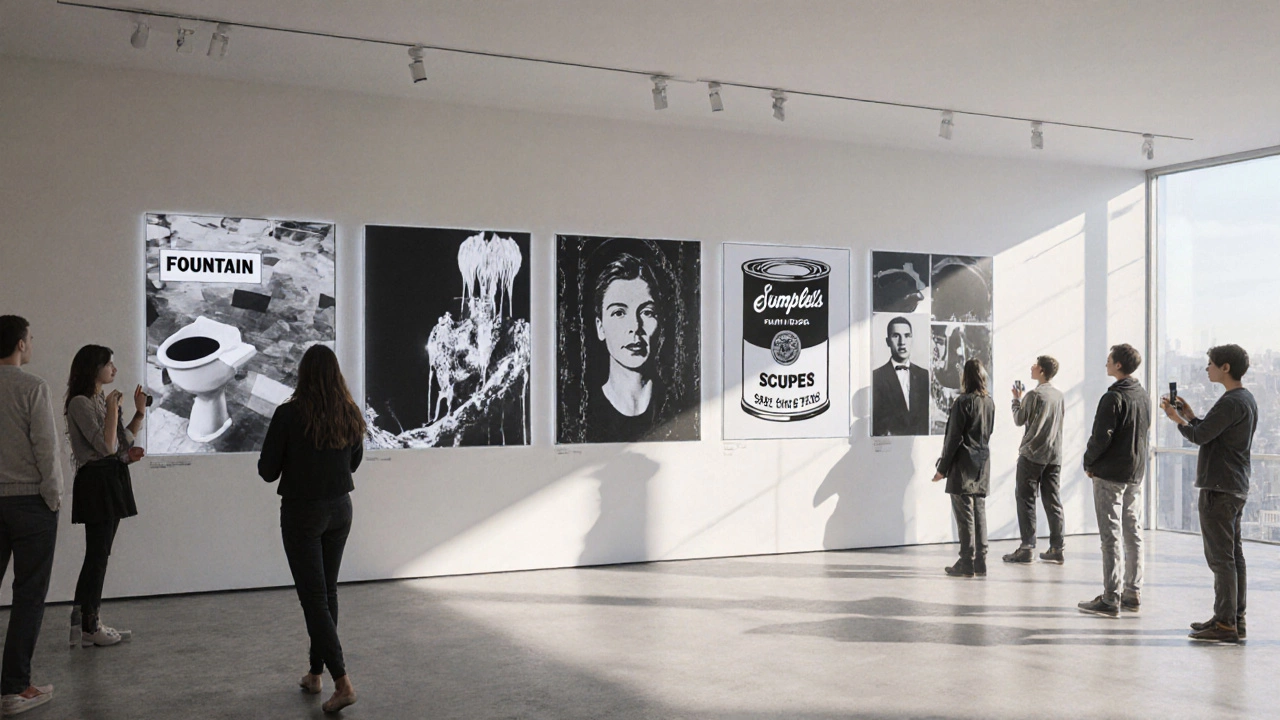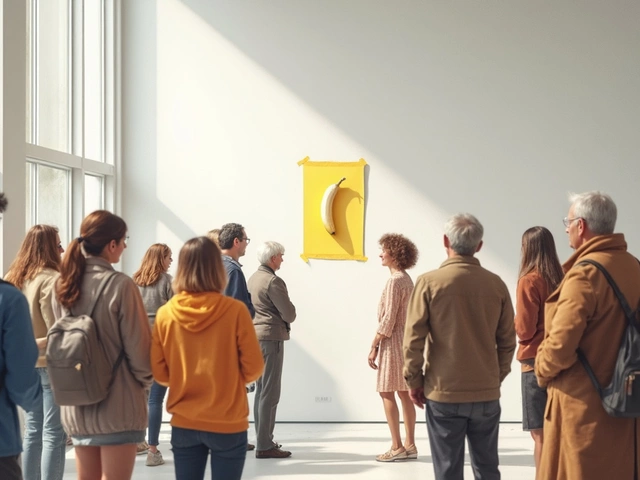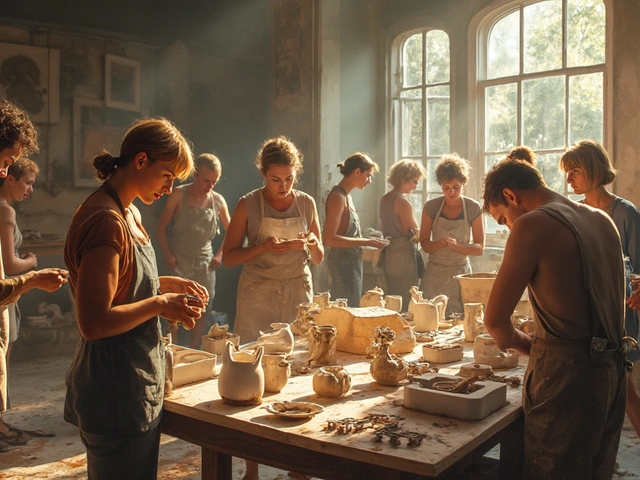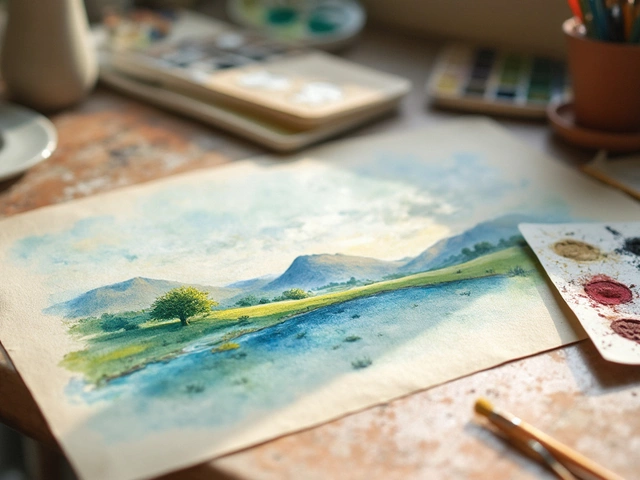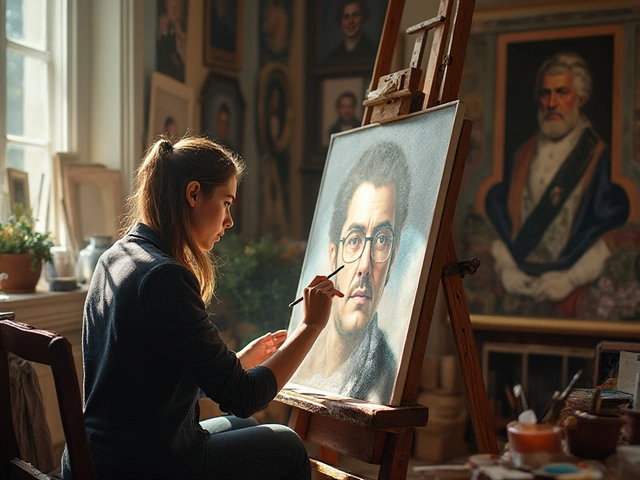Art Movement Legacy Quiz
Who Shaped Contemporary Art?
Test your knowledge about the artists who laid the foundation for contemporary art. Select the best answer for each question, then see your results!
Question 1: Which artist is known for creating 'Fountain,' a urinal signed and displayed as art?
Question 2: Which artist pioneered Cubism, which fragmented perspective into geometric planes?
Question 3: Which artist is known for 'Number 31,' a drip painting that emphasized the process of painting?
Question 4: Which artist is famous for transforming consumer goods like Campbell's Soup Cans into high art?
Question 5: Which artist used self-portraits to explore identity, gender, and media representation in her 'Untitled Film Stills' series?
Your Results
You scored 0 out of 5.
Your most aligned artist is:
When you hear the phrase contemporary art is the art movement that emerged after World II, embracing diverse media, concepts, and global perspectives, you might wonder who first lit the fuse.
What Exactly Is Contemporary Art?
Contemporary art isn’t a style; it’s a timeframe that starts roughly in the 1960s and runs to today. It pulls from Modernism while breaking every rule that came before. Think installations that fill an entire room, digital works that respond to a viewer’s heartbeat, and photographs that question identity. Because the field is so wide, scholars and critics often look back to early innovators to claim the title of “father.”
Why the Question Still Pops Up
Pinning a single name on such a sprawling movement helps students, curators, and collectors make sense of a chaotic narrative. It creates a reference point for museum labels, textbooks, and auction houses. At the same time, the claim is controversial: each era’s breakthrough builds on the last, so any one figure is both a pioneer and a product of earlier revolutions.
Early 20th‑Century Trailblazers
Before the term “contemporary” existed, a handful of artists smashed conventions that still echo today. Their experiments with form, viewer interaction, and everyday objects laid the groundwork for later generations.
The Dada Disruptor: Marcel Duchamp
Marcel Duchamp (1887‑1968) threw the art world into disarray with his readymades. By signing a ordinary porcelain urinal and calling it Fountain, he asked: What makes an object art? Dada’s anti‑art stance challenged the authority of institutions and opened the door for conceptual work that dominates contemporary practice.
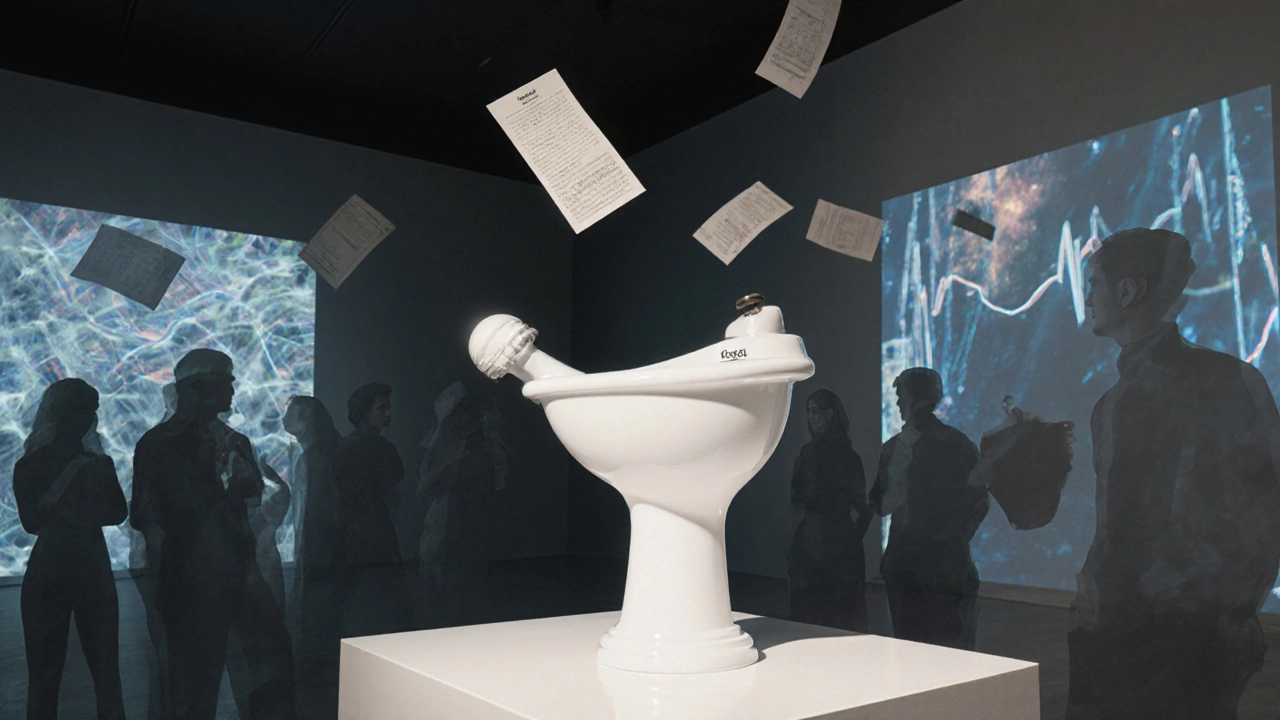
The Cubist Innovator: Pablo Picasso
Pablo Picasso (1881‑1973) shattered perspective in the early 1900s. Les Demoiselles d'Avignon broke form into geometric planes, paving the way for the fragmented visual language seen in many contemporary installations and digital collages. Picasso’s relentless reinvention set a precedent for artists to constantly evolve.
The Abstract Action Painter: Jackson Pollock
Jackson Pollock (1912‑1956) turned the canvas into an arena. His drip paintings, like Number 31, emphasized process over product-a core idea in performance and installation art today. By making the act of painting visible, he gave contemporary artists a blueprint for kinetic and experiential work.
Pop Art’s Icon: Andy Warhol
Andy Warhol (1928‑1987) transformed everyday consumer goods into high art. Silkscreened portraits of Marilyn Monroe and Campbell’s soup cans blurred the line between commercial design and fine art. His embrace of mass production predicted today’s digital reproductions and meme culture.
The Conceptual & Photographic Visionary: Cindy Sherman
Cindy Sherman (born 1954) uses self‑portraiture to explore identity, gender, and media representation. Her Untitled Film Stills series prefigured the selfie‑driven, identity‑focused work that floods Instagram galleries and gallery walls alike.
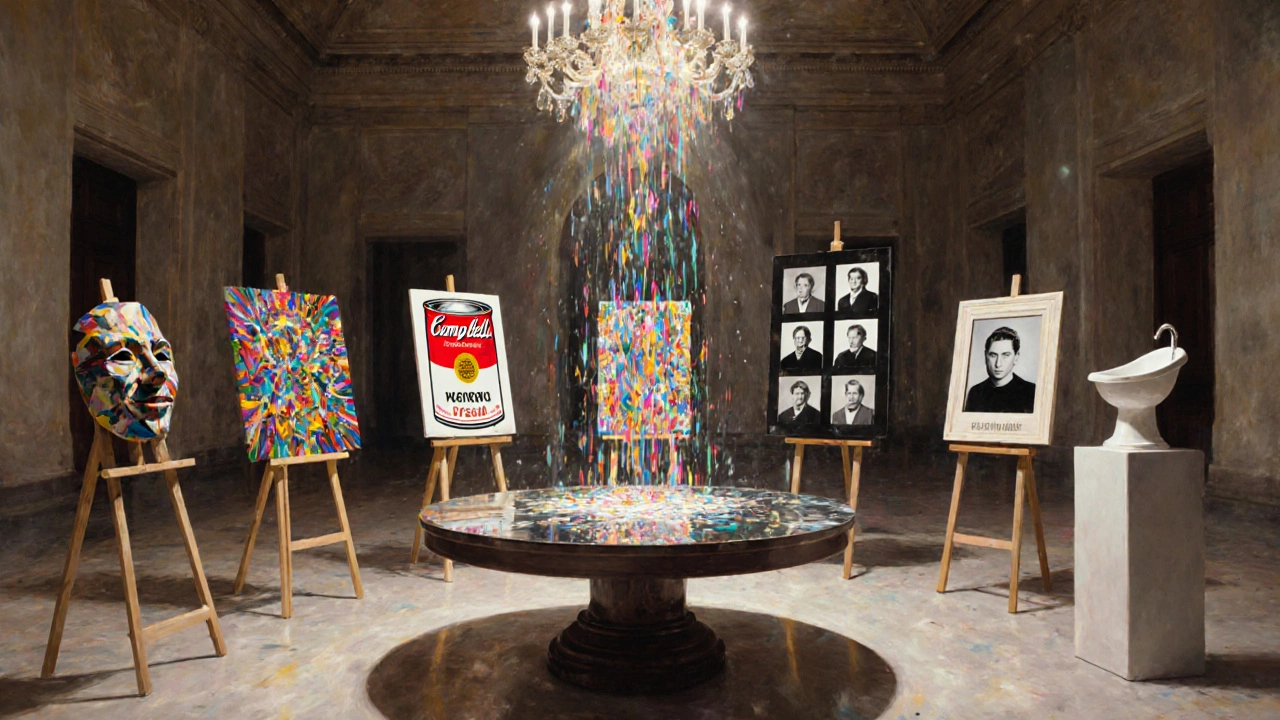
Who Truly Earns the Title?
Each of these artists contributed a crucial thread to the tapestry of contemporary practice. Duchamp introduced the idea that the concept could outweigh craftsmanship; Picasso re‑engineered visual language; Pollock made process the artwork; Warhol turned consumer culture into subject matter; Sherman interrogated identity with photographic savvy. Because contemporary art ultimately thrives on the tension between idea and medium, the “father” title can’t rest on a single shoulder.
If we must pick, many scholars lean toward Marcel Duchamp as the earliest catalyst. His readymades planted the seed of conceptualism that grew into the diverse, idea‑driven world we call contemporary art. Yet acknowledge that without Picasso’s formal experiments, Warhol’s pop sensibility, or Pollock’s gestural drama, Duchamp’s legacy would look very different.
How to Explore Contemporary Art Today
- Visit local galleries that feature emerging artists-look for works that blend media, like video‑sculpture or AR installations.
- Check online museum databases (MoMA, Tate) for virtual exhibitions that contextualize the pioneers discussed above.
- Read exhibition catalogues that trace the lineage from Dada to today; titles usually include “From Duchamp to Digital.”
- Attend artist talks or panel discussions that address the “father” debate-many museums host them during major shows.
- Experiment yourself: create a readymade, a selfie series, or a drip painting to experience the process firsthand.
Comparison of Key Contenders
| Artist | Born-Died | Key Contribution | Iconic Work | Impact on Contemporary Art |
|---|---|---|---|---|
| Marcel Duchamp | 1887‑1968 | Introduced readymades, Conceptual art | Fountain (1917) | Shifted focus from object to idea, foundation for installations |
| Pablo Picasso | 1881‑1973 | Developed Cubism, fragmented perspective | Les Demoiselles d'Avignon (1907) | Inspired deconstruction in sculpture and digital collage |
| Jackson Pollock | 1912‑1956 | Action painting, emphasis on process | Number 31 (1950) | Enabled performance art and immersive installations |
| Andy Warhol | 1928‑1987 | Pop Art, mass‑media imagery | Campbell's Soup Cans (1962) | Legitimized commercial imagery, foreshadowed digital memes |
| Cindy Sherman | 1954‑present | Conceptual photography, identity critique | Untitled Film Stills (1977-1980) | Influenced selfie culture and gender‑political art |
Frequently Asked Questions
Is there a consensus on who the father of contemporary art is?
No single answer dominates the field. Scholars often cite Marcel Duchamp for his conceptual turn, but others argue for Picasso, Pollock, Warhol, or Sherman based on different criteria.
How does Dada relate to today’s art?
Dada’s anti‑art stance directly informs contemporary practices that question the nature of art itself, such as institutional critique, performance, and digital interventions.
Can a living artist be called the father of contemporary art?
Typically the title is reserved for historical figures whose influence spans decades. While living artists can be hugely influential, the phrase “father” implies a foundational, generational impact.
Why does the debate matter for collectors?
Understanding an artist’s role in shaping contemporary art helps gauge long‑term relevance and market stability, guiding investment decisions.
Where can I see works by these artists?
Major museums such as MoMA (New York), Tate Modern (London), Centre Pompidou (Paris), and the Museum of Contemporary Art (Sydney) regularly exhibit pieces by Duchamp, Picasso, Pollock, Warhol, and Sherman.
